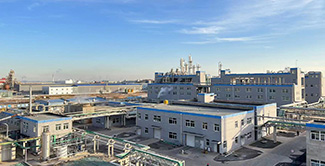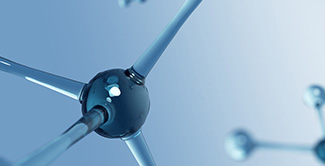The Ministry of Industry and Information Technology takes the pulse: chemical fertilizers "puffiness" and pesticides "puffiness"
Since July, the Department of Raw Materials Industry of the Ministry of Industry and Information Technology has intensively organized chemical fertilizers, pesticides and other industries to hold economic situation analysis seminars in the first half of the year. On the whole, the problems of overcapacity in the two industries in the first half of the year are obvious: the overall decline in the efficiency of the fertilizer industry is in a state of "defeating"; Although the benefits of the pesticide industry are acceptable, it is also "puffed up" due to environmental protection and insufficient capacity for overcapacity. According to data from the National Bureau of Statistics, from January to May 2014, the national chemical fertilizer (equivalent) output was 28.04 million tons, a slight increase of 0.3% year-on-year. Among them, nitrogen fertilizer was 19.96 million tons, down 0.6%; phosphate fertilizer was 6.37 million tons, up 1.3%; potash fertilizer was 2.01 million tons, up 6%. The main business income of the fertilizer industry was 348.38 billion yuan, a year-on-year increase of 3.8%. The profit of the fertilizer industry was 8.38 billion yuan, a year-on-year decrease of 40.1%. Among them, nitrogen fertilizer profit was -23.6 billion yuan, down 163.8%; phosphate fertilizer was 350 million yuan, down 34%; potash fertilizer was 1.77 billion yuan, down 30%. In the same period, the domestic output of pesticide technical was 1.5 million tons, a slight increase of 2.8% year-on-year. The main business income of the pesticide industry was 116.6 billion yuan, a year-on-year increase of 8.6%. Exported 564,000 tons of pesticides, an increase of 12.9% year-on-year. The profit of the pesticide industry was 8.55 billion yuan, a year-on-year increase of 11.9%. On July 1, the Department of Raw Materials Industry of the Ministry of Industry and Information Technology organized a symposium on the analysis of the economic situation of the pesticide industry in the first half of the year. A total of more than 30 representatives from China Pesticide Industry Association, Petroleum and Chemical Industry Planning Institute, Shandong, Henan, Hebei, Hubei, Sichuan and other key production areas and domestic key pesticide manufacturers attended the meeting. Although various economic indicators are more prominent in the chemical industry, representatives of participating companies believe that there are still many outstanding problems in the current pesticide industry, such as overcapacity, weak technological innovation capabilities, insufficient pesticide professionals, unsound market order, and environmental protection. Increased pressure, etc. If these internal problems are not resolved, the healthy and sustainable development of the industry is still unsustainable. In response to the problems faced by the pesticide industry, the participants believed that all parties need to strengthen cooperation and actively respond. It is necessary to comprehensively consider the introduction and improvement of relevant policies and measures, vigorously promote the merger and reorganization of pesticide companies, eliminate backwards, strengthen technological innovation, promote energy conservation and emission reduction, and guide The pesticide industry continues to develop healthily. On July 2~3, a symposium on the analysis of the economic situation of the chemical fertilizer industry was also held in Beijing. More than 60 representatives from China Nitrogen Fertilizer Industry Association, China Phosphate Fertilizer Industry Association, China Inorganic Salt Industry Association (Potassium Fertilizer) Branch and domestic key fertilizer manufacturers participated meeting. At the symposium, domestic key fertilizer companies reported that the current nitrogen fertilizer industry has serious overcapacity, poor exports and a sharp decline in industry profits. In response to the outstanding problems faced by the nitrogen fertilizer industry, participants believed that chemical fertilizers are related to national food security. Governments, associations, and enterprises should attach great importance to them, take effective measures to ensure the healthy development of the industry, and make overall consideration of adjusting and canceling differential tariffs on fertilizer exports during off-peak and peak seasons. Exemption of value-added tax and other related policies and measures, encourage the merger and reorganization of fertilizer companies, eliminate backward, strengthen technological innovation, promote energy conservation and emission reduction, and promote the transformation and upgrading of the fertilizer industry.

 mainly engaged in the R&D and production of pharmaceutical intermediates, pesticide intermediates, dye chemical intermediates and DEET.
mainly engaged in the R&D and production of pharmaceutical intermediates, pesticide intermediates, dye chemical intermediates and DEET. mainly engaged in the R&D and production of pharmaceutical intermediates, pesticide intermediates, dye chemical intermediates and DEET.
mainly engaged in the R&D and production of pharmaceutical intermediates, pesticide intermediates, dye chemical intermediates and DEET.





